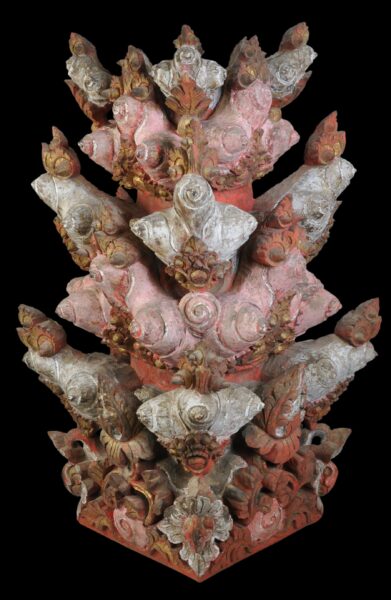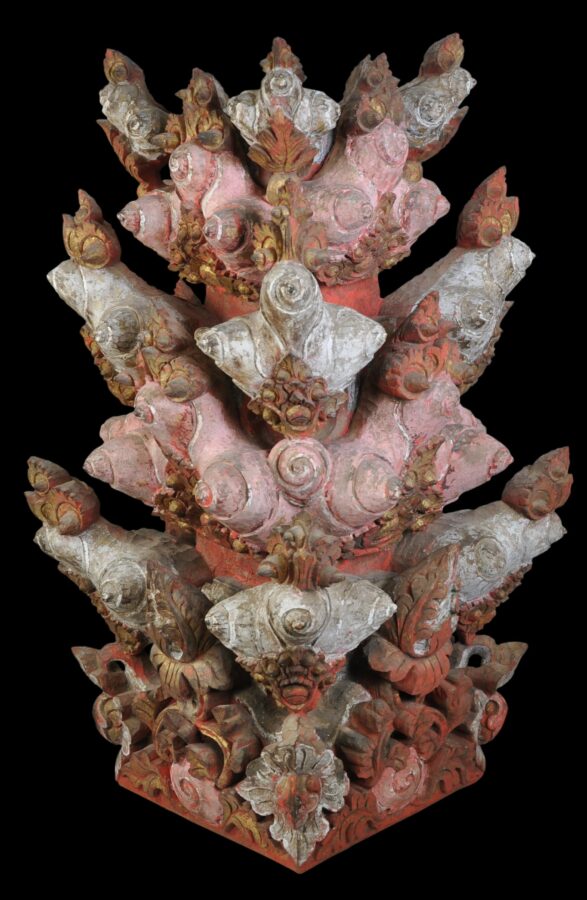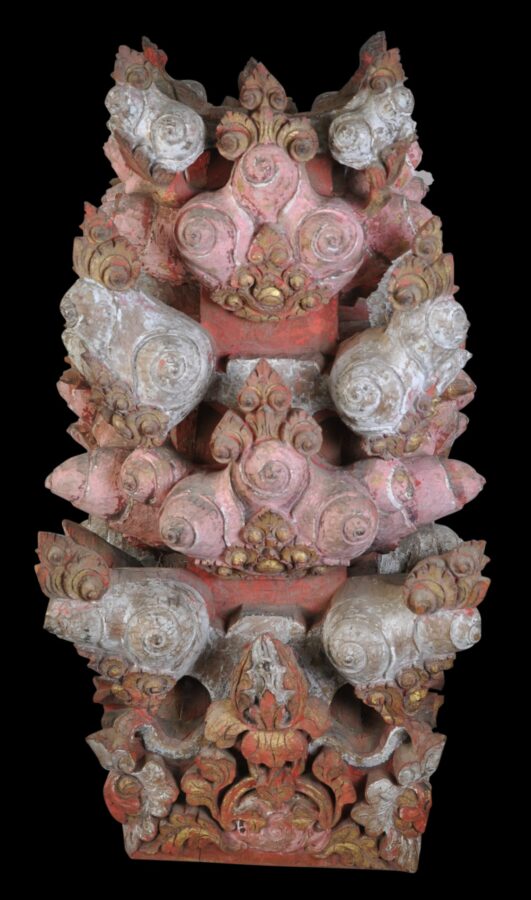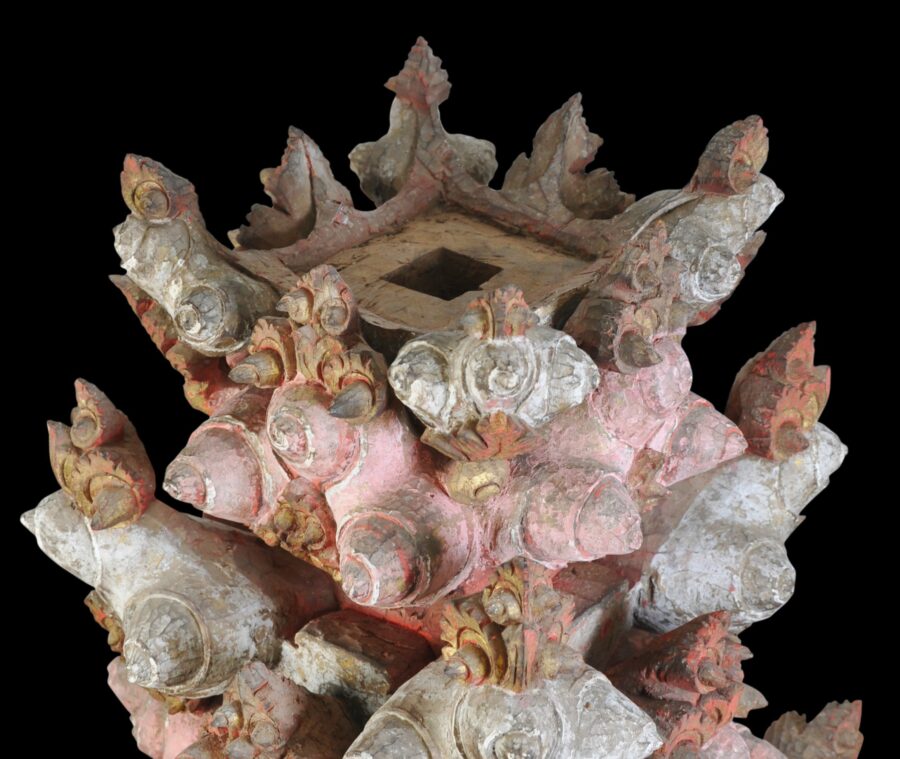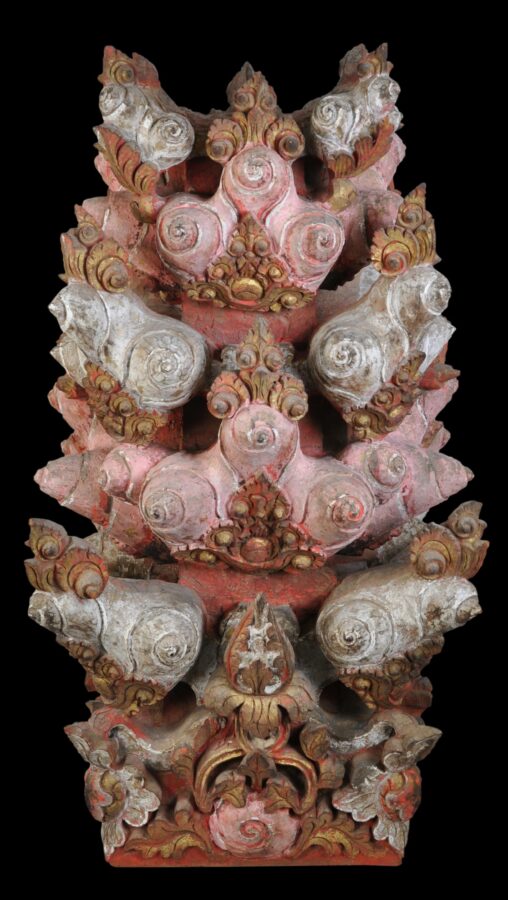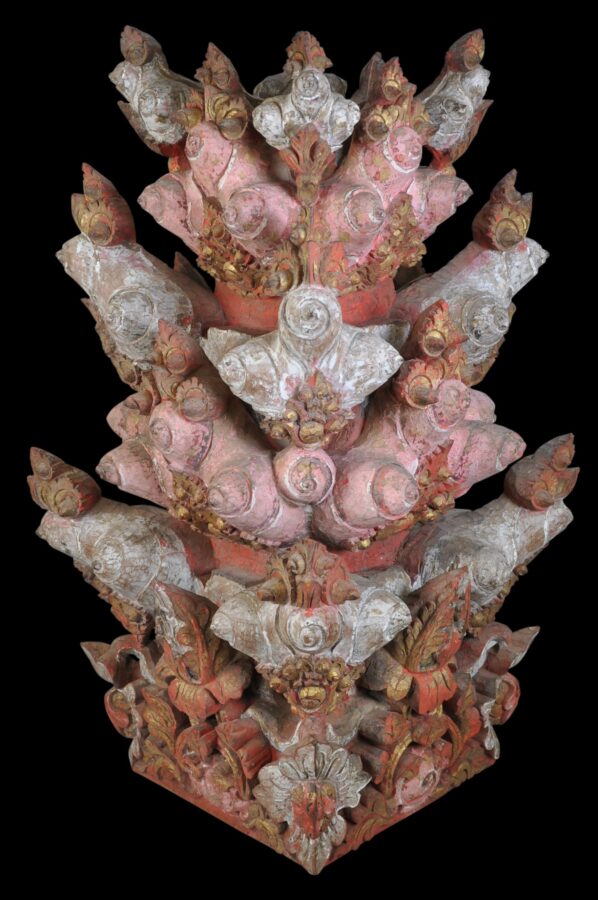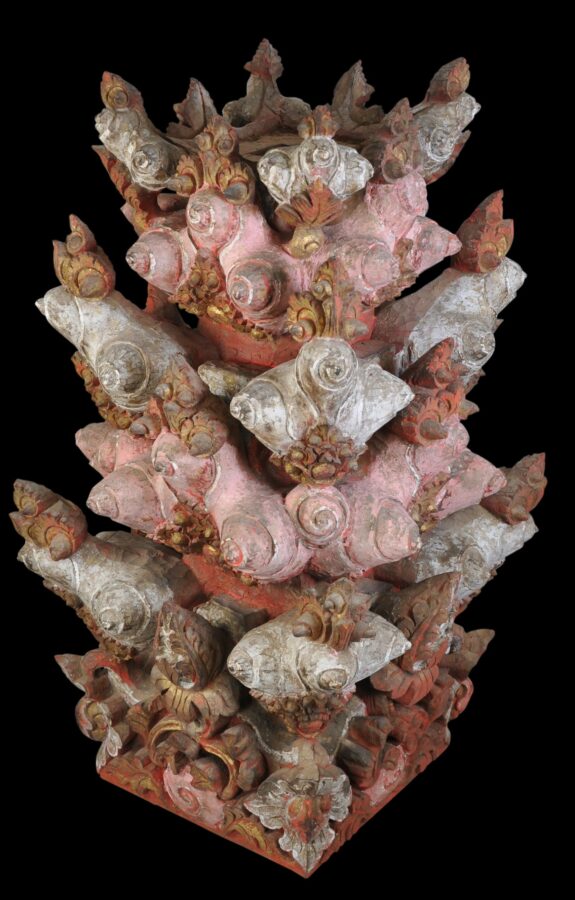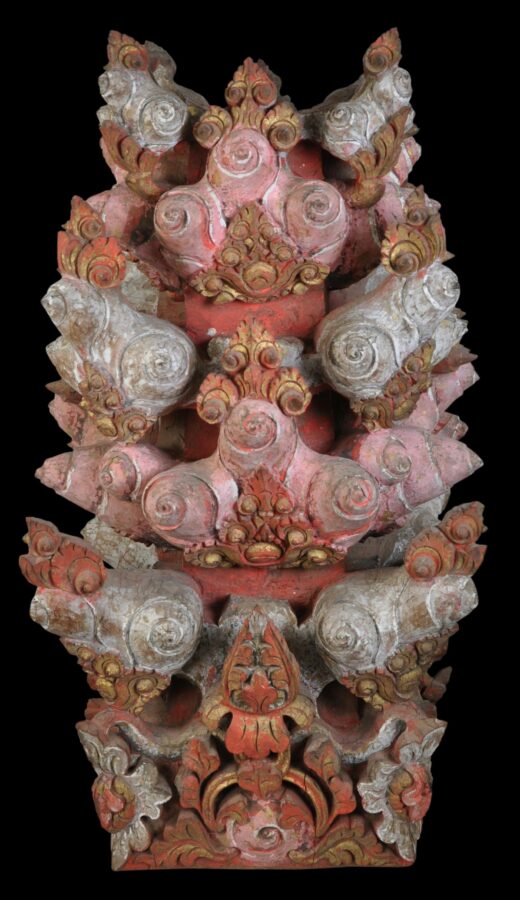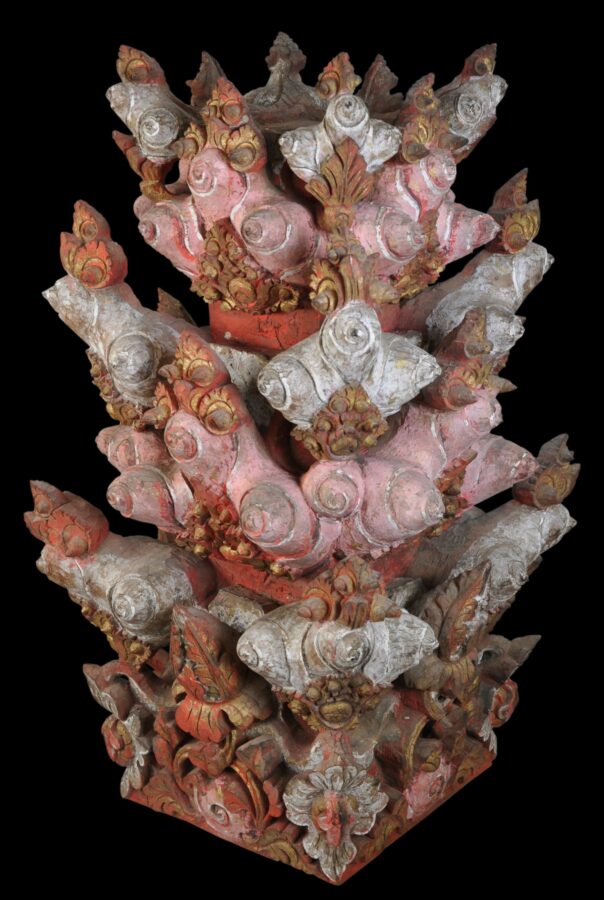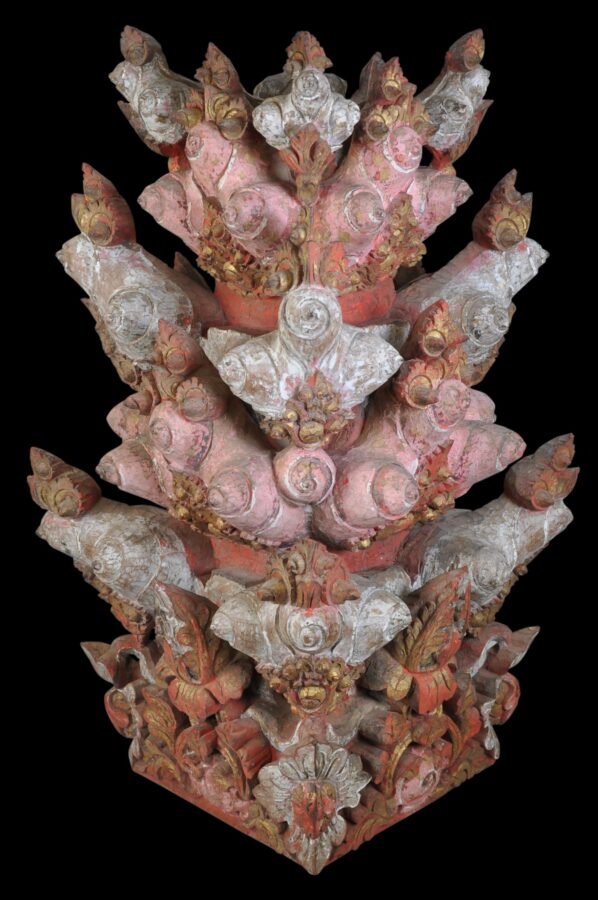This wonderfully dramatic, well-carved wooden block from the Hindu island of Bali in Indonesia was intended to serve as a pillar base (sendi tugeh) at an entrance of an open-walled pavilion, most probably in a temple compound.
Of much sculptural beauty, it has a tapering form. Each of the four sides is carved in very high relief with protruding triple ‘eye ball’ motifs that emerge from gold, leafy flourishes. These motifs, perhaps intended to evoke the eyes of a kala head, are a motif seen carved in stone and cast in gold jewellery from the late Majapahit era on east Java. When Islam arrived on Java, the Majapahit rulers fled to Bali, which even today retains Majapahit material culture influence.
The composition is particularly striking and complex, and has been decorated with red, pink and gold colours.
A cavity runs through into the centre of the support to allow the post to be inserted.
See Ramseyer (1977, fig. 97 & 98) for related sendi tugeh. A similar example is displayed in the Bali Museum, Denpasar, Bali.
The example here has a superb patina consistent with considerable age. It is sculptural and highly decorative, and among the most complex in terms of its detail and composition that we have seen.
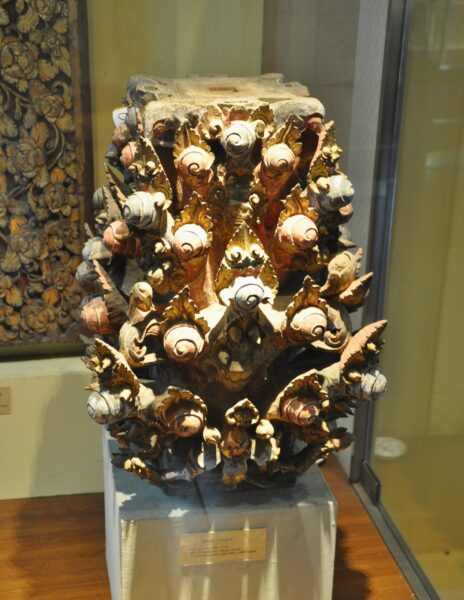
Above: A related sendi tugeh displayed in the Bali Museum, Denpasar, Bali, Indonesia.
References
Maxwell, R. et al, Bali: Island of the Gods, National Gallery of Australia, 2014.
Polak, J., Ancient Indonesian Gold of the Central and Eastern Javanese Periods 750-1550: A Selection, C. Zwartenkot Art Books, 2022.
Ramseyer, U., The Art and Culture of Bali, Oxford University Press, 1977.


